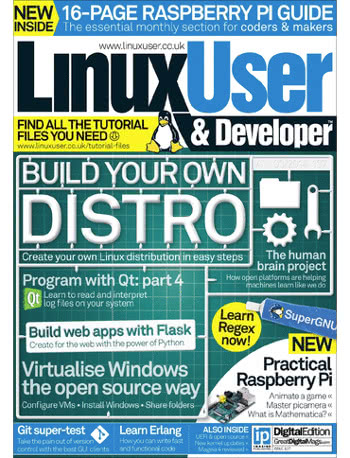
First, Hobby Tech. In this month’s tutorial, I show the reader how to turn a Raspberry Pi Model B – or Model A with optional USB network adapter – into a proxy that provides access to TOR, The Onion Router Project, a privacy-enhancing network that encrypts your internet traffic and shuffles it around before popping it out of a random exit node. Although it’s possible to run TOR software directly on a PC, having a hardware proxy can help get otherwise unsupported devices – like the Apple iPad – onto the TOR network.
The piece on the Keyrah v2 came about when I was looking for ways to use the chassis and keyboard I had replaced on my Amiga 1200. Although badly yellowed, the keyboard was fully working and throwing it away seemed a shame; thankfully, the Keyrah makes that necessary by interfacing with the Amiga keyboard and turning it into a USB keyboard for modern machines, while also providing two connectors for traditional joysticks. Coupled with yet another Raspberry Pi, it was possible to turn the empty A1200 chassis into a fully-functional computer – and surprisingly quickly, too.
Intel’s Galileo is the company’s first Arduino-certified device, and a showcase for its Quark processor. Based on the original Pentium architecture – complete with the F00F Bug erratum – the Quark is Intel’s attempt to take on ARM in the embedded space, and if the Galileo is any indicator it still has a way to go. Slower at general-purpose computing than a Pi and at IO than a true Arduino, the Galileo is hard to love – but the presence of a mini-PCIe socket on the back suggests it could find a home in more complex projects.
Finally for Hobby Tech, there’s a look at cooling a Raspberry Pi with the smallest active heatsink I’ve ever seen. Barely covering the tip of my finger, the heatsink was an impulse purchase from eBay and cost nearly as much as the Pi on which it is attached; it’s certainly eye-catching, however, and my core temperature readings may be of interest to anyone using a Pi in high ambient temperatures or in cases with otherwise stagnant airflow.
My last contribution to this issue is the interview with Mark Doran. While the extract published in Linux User & Developer concentrated mainly on Secure Boot and its increasing adoption after initial fear in open source projects, this extract looks more at UEFI itself and how it came to be. For historical interest, there’s also what I believe to be the first comprehensive time-line of the BIOS, beginning in 1975 with Gary Kildall coining the term to describe part of his CP/M operating system.
All this, plus the usual selection of stuff written by people who aren’t me, is available at newsagents, corner shops and supermarkets now, or digitally via Zinio and similar services.

 In Imagine Publishing’s Linux User & Developer this month, you’ll find an interview with Mark Doron of the UEFI Forum nestled alongside my usual four-page spread of news.
In Imagine Publishing’s Linux User & Developer this month, you’ll find an interview with Mark Doron of the UEFI Forum nestled alongside my usual four-page spread of news.